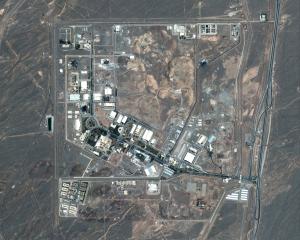Thanks to GeoNet, we can all be armchair seismologists now, writes Dr Helen Anderson on the geological hazard monitoring system's 15th birthday.
Pretty much everyone who's lived through an earthquake in New Zealand has the GeoNet app at hand. After or even during an earthquake we rush to check the magnitude, and find out where and how strongly it has been felt.
We can all be armchair seismologists now - we opine about how deep it was, how far away, and whether it's a foreshock, aftershock or what fault it might belong to.
Behind the GeoNet app is a great success story that deserves celebration, especially on this 15th anniversary. GeoNet began as a partnership between the Earthquake Commission (EQC) and Crown research institute GNS Science in 2001.
While partnerships are increasingly common in private enterprise, a public-public partnership like GeoNet continues to have been inspired. It's very rare in the science world to have such an effective partnership that has stood the test of 15 years (and some major earthquakes).
This is a classic partnership with impacts that could not have been achieved by either party alone. Its success is underlined by the fact that it has since expanded to include Land Information NZ, the Department of Conservation, and even some private companies.
Before 2001, GNS had a great team of seismologists who reported regularly, through official channels, on New Zealand earthquakes. They wrote knowledgeable scientific papers on plate tectonics and New Zealand's seismicity. But there was a looming problem; the equipment (seismometers, communication equipment and computer systems) was rapidly becoming out-of-date, and government science funding was increasingly hard to come by.
In stepped some people who were prepared to do something very different, and GeoNet was born as a partnership between EQC and GNS Science. First and foremost EQC saw the opportunity to make sure New Zealand's geological hazard information really is world-class.
This means that when they go offshore to negotiate reinsurance premiums then we, as a nation, are not paying more than necessary. EQC also saw the opportunity to make sure all New Zealanders get better information to help us minimise our exposure to natural hazards.
GNS in return has got great equipment, and the GeoNet team within GNS has continued to keep up with, and in fact to lead the world in its ability to rapidly process earthquake data and provide accurate locations and science advice.
Every few years, international experts descend on the GeoNet base in Avalon, Lower Hutt for several days to make sure they continue to innovate. The verdicts have been unanimously positive.
GeoNet scientists are making great strides in improving the way earthquake shaking data is transmitted from remote recording stations, and they continue to fine-tune the algorithms needed to get fast and accurate earthquake locations.
First responders and civil defence officials get accurate information within minutes.
Last, and probably most important to many of us, is GeoNet's critical role in informing the public in an accessible way. Understanding where an earthquake has occurred is information.
Better knowledge comes from understanding why it happened and what to expect next, in terms of aftershocks or tsunamis. GeoNet has not been satisfied with sending out tweets; they've also pushed the boundaries with some great innovation in public education such as online critiques of disaster movies using the social media platform Reddit.
Fifteen years on, GeoNet is a household name, a great model of how public sector innovation and partnership is alive and well. It started with the aim of making sure we had world-class earthquake information, that's extended to volcanic and landslip information.
Bringing together smart people, great technology and innovative thinking means there's much more behind GeoNet than its well-known app.
-Dr Helen Anderson QSO is a former seismologist who worked in GNS Science last century. She was chief executive of the Ministry of Research, Science and Technology for six years and is now a director of various companies.











